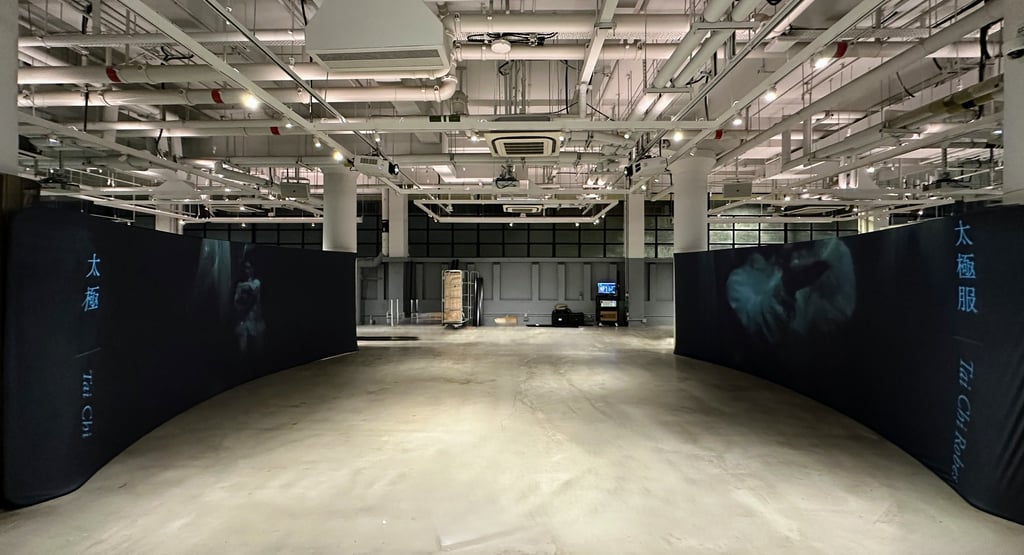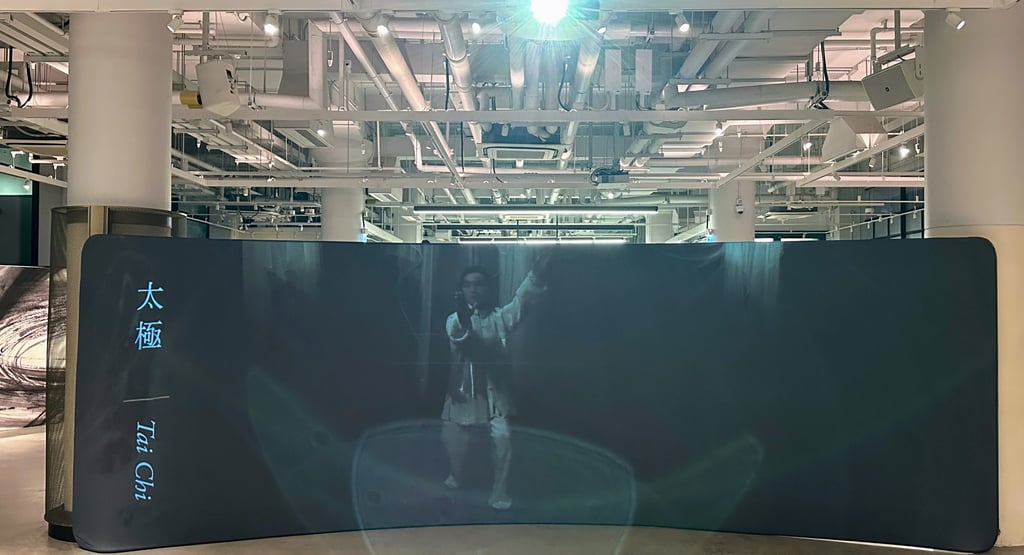Transforming Central Market Hong Kong: The Art of Projection Mapping
An innovative projection mapping art installation created by 3DD HK for Central Market in Hong Kong, utilizing two Epson 7000 lumens 4K projectors to display dynamic visual effects on a 6.5-meter wide by 2-meter high arc-shaped wall. The project combines advanced technology with cultural storytelling, transforming the historic building into an immersive interactive space that enhances visitor experience and redefines urban artistic expression. Through precise projection calibration and creative content design, it successfully transforms the traditional market into a cultural landmark that merges technology and art.
3D PROJECTION
pojecetin mapping
10/2/20255 min read


Introduction to Projection Mapping
Projection mapping, often referred to as video mapping, is a transformative technology that allows artists and creators to project images and videos onto irregularly shaped surfaces, turning ordinary locations into dynamic canvases. This innovative form of multimedia art has gained tremendous significance in both modern entertainment and artistic expression. By utilizing advanced projectors, specialized software, and precise mapping techniques, creators can effectively manipulate light and imagery to enhance the visual experience, redefining perception through immersive storytelling.
The basic principle of projection mapping involves the calibration of a projector to display visual content onto a physical space in a way that corresponds precisely with the surface's contours. This process requires a thorough understanding of both the digital and physical aspects of the project. High-resolution projectors are employed to ensure bright and vibrant visuals, while sophisticated mapping software enables seamless integration of graphics with the surrounding architecture or landscape. These technological advancements have significantly expanded the scope and appeal of projection mapping across various fields.
Today, projection mapping is widely used in advertising, performances, festivals, and art installations, illustrating its versatility and effectiveness in engaging audiences. It has often been employed to create eye-catching advertisements that captivate viewers in urban environments. In artistic contexts, projection mapping serves as a powerful storytelling tool, allowing artists to explore complex themes and narratives within a spatial framework. As we examine the application of projection mapping in Central Market Hong Kong, it becomes evident that this technique not only enhances the visual aesthetics but also fosters interaction and connection with viewers, pushing the boundaries of traditional art and entertainment. Through the lens of this innovative medium, we can uncover new dimensions of creativity and engagement in public spaces.
The Central Market Project Overview
The Central Market in Hong Kong has embarked on a transformative journey aimed at revitalizing its cultural and commercial significance while embracing innovative technology. The primary goal of the project is to reimagine Central Market as a vibrant hub that seamlessly blends heritage with modern artistic expressions, specifically through advanced projection mapping techniques. This artistic approach not only preserves the historical essence of the market but also reinvents it as an interactive space where technology and tradition coalesce.
At the heart of the project lies a clear vision: to enhance the visitor experience by making it more engaging and immersive. By integrating projection mapping, the Central Market endeavors to offer dynamic visual narratives that reflect local culture, artistry, and history. These projected visuals will not only serve as enchanting displays but also as a medium to educate visitors about Hong Kong's rich cultural tapestry, fostering a deeper connection to the locale.
The collaboration between Central Market management and the projection mapping company has been instrumental in shaping the scope of this project. Together, they have focused on utilizing cutting-edge technology to create visually captivating installations that will adorn the market’s architecture, animating its structure in ways previously unimagined. This partnership aims to ensure that the projected content is not only aesthetically pleasing but also resonates meaningfully with the diverse audience that frequents the market.
As a result, the projected artworks will significantly influence both the market’s ambiance and its visitors' experience. The project is expected to transform Central Market from merely a place of commerce into a cultural landmark, thereby enhancing the overall cultural landscape of Hong Kong. The essence of this initiative is to create a space that not only attracts tourists but also engages the local community, reflecting the city’s evolving identity through innovative artistic expressions.
Technical Specifications and Implementation
The projection mapping project at Central Market Hong Kong utilizes advanced technological equipment designed to create immersive visual experiences. Central to this installation are two Epson 7000 lumens 4K projectors, selected for their high brightness and exceptional image quality, enabling vivid and captivating visuals. The projectors play a crucial role in rendering intricate patterns and animations that enhance the market's atmosphere. These devices are complemented by a sophisticated single server responsible for both mapping and playback, ensuring seamless integration of imagery with real-time audience engagement.
The physical setup consists of an arc-shaped wall measuring 6.5 meters in width and 2 meters in height, which serves as a dynamic canvas for the projection mapping. This design choice not only adds a spatial dimension to the projections but also amplifies the viewer's experience, allowing for an enveloping interaction with the visual display. The installation process demanded meticulous attention to detail, as the alignment of each projector was critical for achieving a cohesive visual output. Each projector was strategically positioned to cover the entire surface area of the arc-shaped wall, ensuring a uniform distribution of light.
Calibration posed significant challenges, given the curvature of the wall and the varying projective angles required to map visuals accurately. Using sophisticated software, the team was able to adjust the projection angles and brightness levels, effectively mitigating any distortion that could detract from the overall aesthetic. The result of these technical specifications and enhancements is a stunning series of visuals that resonate with the ambiance of Central Market, merging technology and art into an unforgettable experience for visitors. This meticulous approach to both setup and calibration underscores the project's commitment to high-quality projection mapping.
Impact and Future of Projection Mapping in Urban Spaces
Projection mapping has emerged as a transformative medium for urban spaces, significantly impacting the way visitors engage with environments like Central Market in Hong Kong. The immediate effects of the projection mapping installation are observable through enhanced visitor interaction and emotional engagement. As onlookers are captivated by dynamic visuals and storytelling elements displayed on otherwise static structures, their attention shifts from standard shopping experiences to immersive art encounters. This phenomenon fosters a sense of wonder and curiosity, prompting guests to explore the market more extensively and participate in a dialogue surrounding art, technology, and community.
Viewer reactions have been overwhelmingly positive, with many expressing delight at the seamless integration of art into familiar surroundings. The unique ability to transform traditional spaces into vibrant installations enables creators to connect with audiences on a personal level, evoking emotions that transcend standard visual experiences. By harnessing narrative techniques within the projection mapping, marketers can enhance an urban space's appeal, encouraging repeat visits and boosting local economic activity.
Looking to the future, the potential of projection mapping in urban environments is vast. As technological advancements pave the way for more sophisticated projection techniques, urban landscapes are likely to evolve into interactive realms. Smart urban design can integrate augmented reality elements, allowing individuals to engage with their surroundings in new and imaginative ways. This evolution could lead to increased collaboration among artists, urban planners, and technology developers, resulting in projects that not only showcase artistic expression but also elevate community interaction and inclusivity.
Ultimately, the trajectory of projection mapping in urban settings points towards a future rich with possibilities. As cities embrace this innovative art form, they pave the way for a more engaging urban experience that highlights the interplay between technology and creative expression, shaping a vibrant landscape conducive to artistic encounters.


Explore
Discover immersive 3D projection technology and effects.
Innovate
Engage
© 2025. 3DD HK All rights reserved. powered by Prodesign.hk
